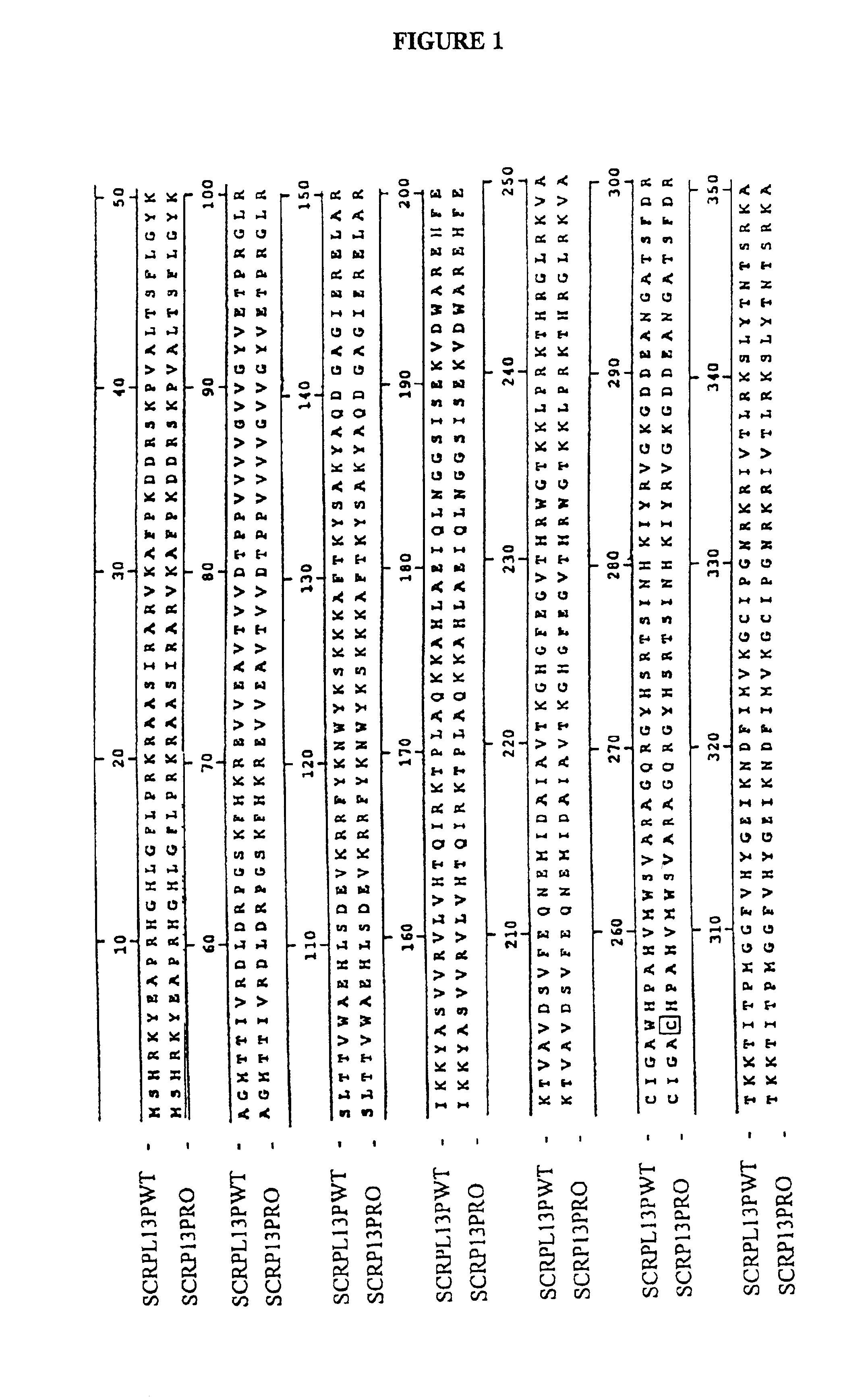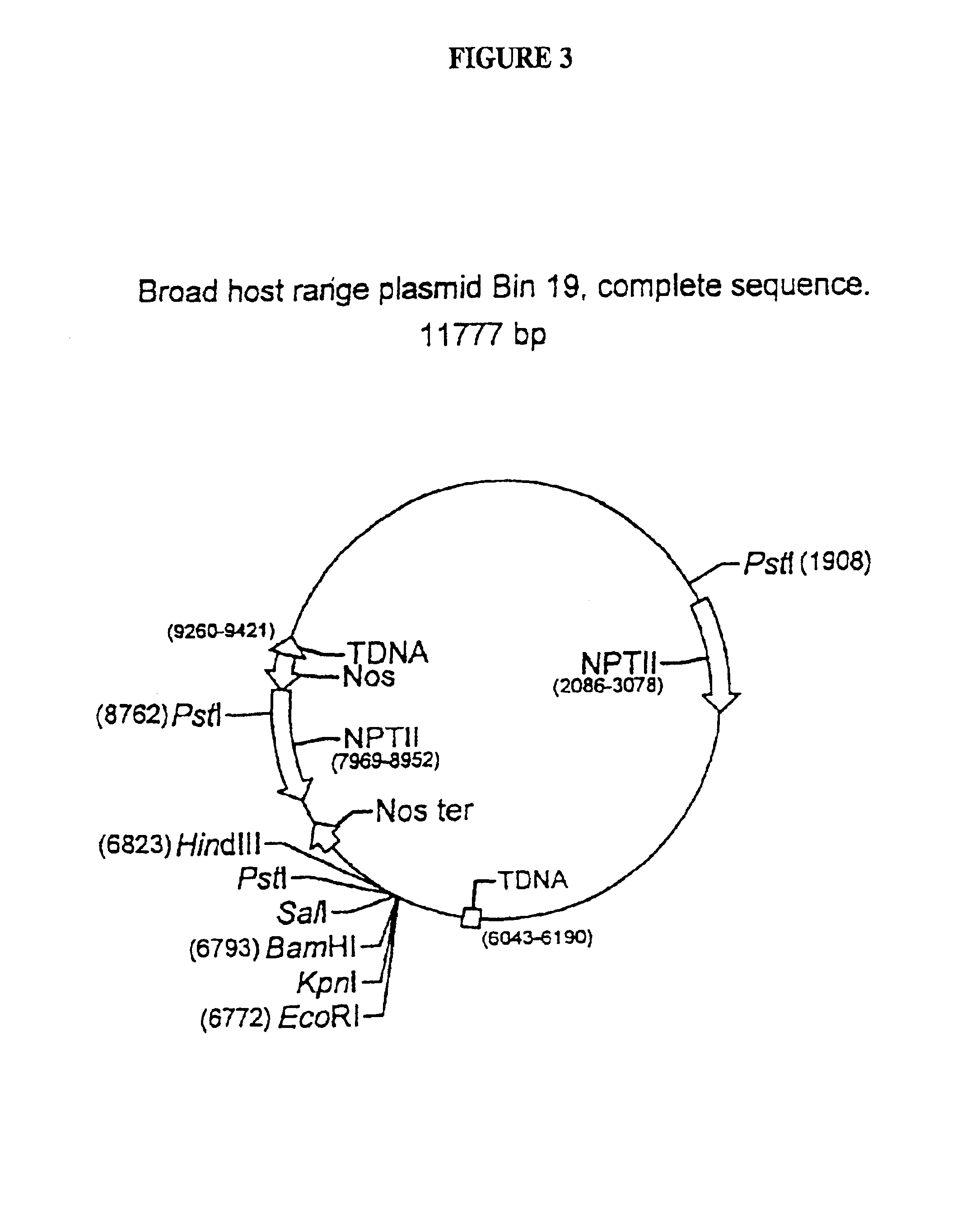Tolerance of trichothecene mycotoxins in plants through the modification of the ribosomal protein L3 gene
a technology of ribosomal protein and trichothecene, which is applied in the field of tolerance of trichothecene mycotoxins in plants through the modification of ribosomal protein l3 gene, can solve the problems of reducing quality, affecting crop yield, and affecting crop yield, and achieves the effect of inhibiting protein synthesis
- Summary
- Abstract
- Description
- Claims
- Application Information
AI Technical Summary
Benefits of technology
Problems solved by technology
Method used
Image
Examples
example 1
Modification of the Rice Rpl3 Gene
The wildtype DNA sequence of the yeast Tcm1 gene was obtained from M. Bolotin-Fukuhara of the Yeast Genome Sequencing Project. Upon comparison of the Tcm1 DNA sequence with the mutant tcm1 sequence, a single base pair change was observed. This change converts a tryptophan (Tcm1) to a cysteine (tcm1) at residue 255 (based on the yeast numbering system) in the proposed RPL3 protein (FIG. 1).
In this example of the present invention, the corresponding rice Rpl3 gene was converted to a form resembling that of the yeast trichodermin resistance gene (tcm1).
A rice Rpl3 cDNA, containing a 21 bp 5′ non-coding region, a 1170 bp coding region, and a 177 bp 3′ non-coding region (including a partial polyA tail), was kindly provided by Dr. A. Kato (Hokkaido University, Japan). The cDNA (originally named T82, renamed pOSRPL3) was received as a 1368 bp insert in the SmaI / EcoRI site of pIBI31. This rice cDNA was randomly cloned from rice suspension culture cells (Uch...
example 2
Vector Construction and Transformation
The upstream XbaI site and an EcoRI site 8 bp past the rice Rpl3 TAG stop codon were used to subclone either the unmodified or modified form of the gene into pCAMterX. pCAMterX is derived from pBIN19 (Bevan, M., 1984, Nucleic Acids Research, 12:8711-8721; FIG. 3) and has had a 70S CaMV promoter, multiple cloning site, and nos 3′ terminator added. Plasmids containing the unmodified and modified Rpl3 genes subcloned into pCAMterX (FIG. 4) were named pCARPL3 and pCARPLC4, respectively. These two clones were transformed into Agrobacterium strain GV3101 / pmp90 which was subsequently used to transform Nicotiana tabacum cultivar Delgold and N. debneyi. Transformed lines of N. tabacum and N. debneyi were selected on regeneration medium (Sproule et al. 1991, Theor. Appl. Genet. 82:450-456) containing 150 μg / ml kanamycin.
example 3
Tobacco Transformation
The vectors containing the unmodified and modified Rpl3 genes (pCARPL3 and pCARPLC4 respectively) were used to transform wild-type tobacco (Nicotiana tobacum) and a wild, diploid species N. debneyi. Both genes were transferred into these tobacco species at equal frequencies which suggests that neither rice gene had a negative effect on growth, regeneration, or seed production. For example, 70 and 63 independent transgenic lines of N. debneyi were recovered for the pCARPL3 and pCARPLC4 genes, respectively. Southern hybridization data and progeny testing of seeds from these transgenic plants was used to verify that the plants chosen for detailed analysis had single copy insertions.
PUM
| Property | Measurement | Unit |
|---|---|---|
| Electrical resistance | aaaaa | aaaaa |
Abstract
Description
Claims
Application Information
 Login to View More
Login to View More - R&D
- Intellectual Property
- Life Sciences
- Materials
- Tech Scout
- Unparalleled Data Quality
- Higher Quality Content
- 60% Fewer Hallucinations
Browse by: Latest US Patents, China's latest patents, Technical Efficacy Thesaurus, Application Domain, Technology Topic, Popular Technical Reports.
© 2025 PatSnap. All rights reserved.Legal|Privacy policy|Modern Slavery Act Transparency Statement|Sitemap|About US| Contact US: help@patsnap.com



